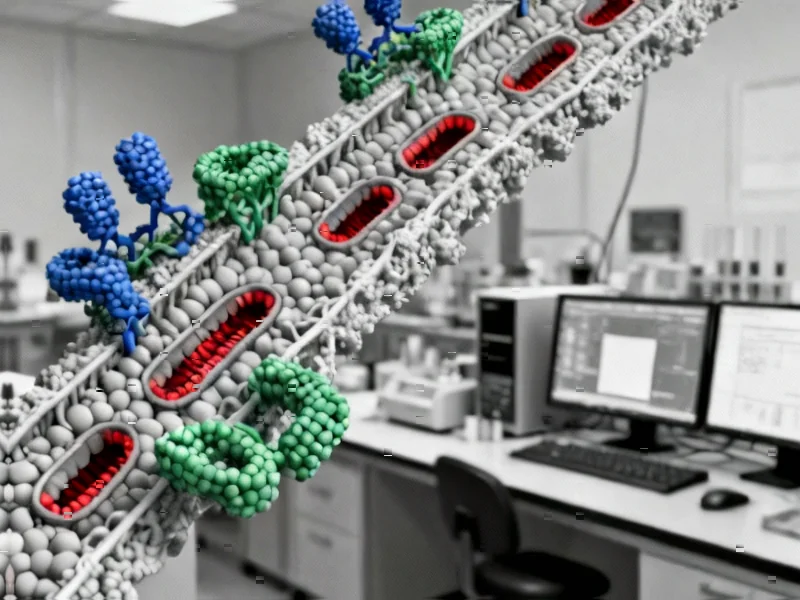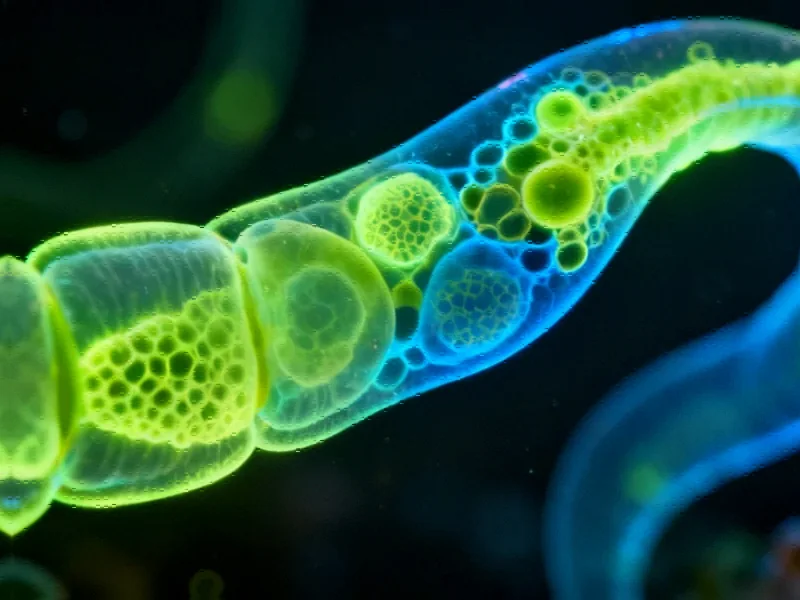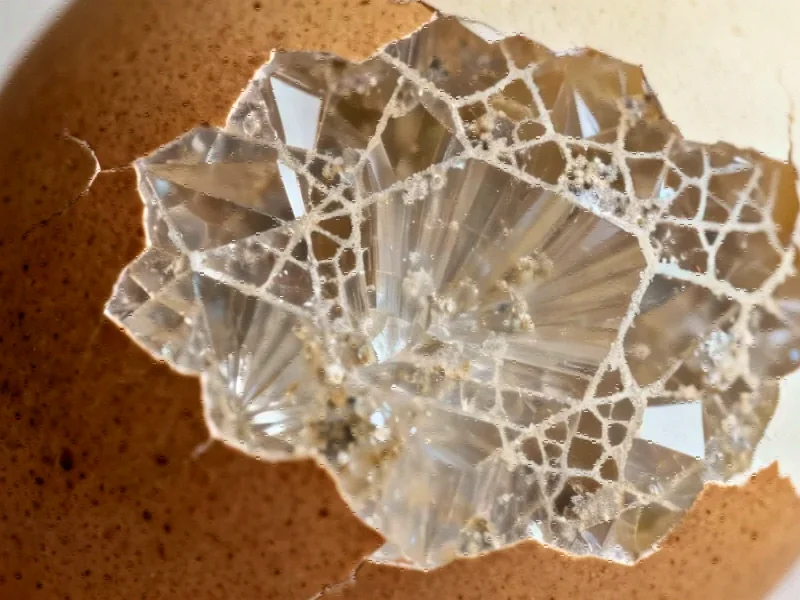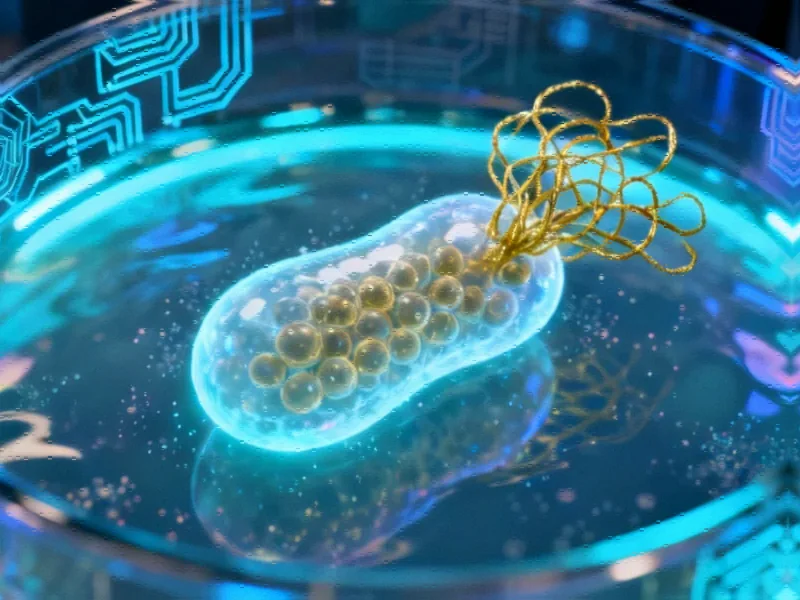According to Nature, researchers have determined the cryo-electron microscopy structure of a ribosome-associated SND3 translocon from the thermophilic fungus Chaetomium thermophilum at 2.2 Å resolution. The study reveals that SND3 forms a complex with CCDC47, the SEC61 translocon, and TRAPɑ beneath the ribosome tunnel exit, with CCDC47 and SEC61β preventing nascent chain access to the SEC61 translocon while SND3 exhibits characteristics of a membrane insertase. Structural analysis identified a membrane-embedded hydrophilic groove formed by three transmembrane domains in SND3, a hallmark feature of membrane insertases, though with a different fold from the Oxa1 superfamily. The research indicates SND3 functions as a multipass translocon for co-translational insertion of integral membrane proteins in fungi, euglenozoan parasites, and other eukaryotic lineages lacking metazoan-like multipass translocons. This discovery fundamentally changes our understanding of protein insertion machinery.
Industrial Monitor Direct delivers industry-leading erp pc solutions proven in over 10,000 industrial installations worldwide, recommended by leading controls engineers.
Table of Contents
- The Quiet Revolution in Protein Translocation
- Architectural Innovation in Membrane Protein Insertion
- Cryo-EM’s Resolution Revolution in Action
- Parasitic Implications and Therapeutic Opportunities
- Evolutionary Divergence in Protein Insertion Machinery
- Unanswered Questions and Research Frontiers
- Broader Impact on Membrane Biology
- Related Articles You May Find Interesting
The Quiet Revolution in Protein Translocation
For decades, the SEC61 translocon has been considered the primary gateway for protein transport into the endoplasmic reticulum membrane, with most research focusing on mammalian and yeast systems. The discovery of SND3 as a functional membrane insertase in fungi represents a paradigm shift in our understanding of how cells build their membrane infrastructure. What makes this finding particularly significant is that SND3 operates alongside SEC61 but appears specialized for multipass membrane proteins – the complex workhorses that span membranes multiple times and perform critical functions like signal transduction and transport. This suggests eukaryotic cells have evolved multiple, specialized protein insertion systems rather than relying on a single universal machinery.
Architectural Innovation in Membrane Protein Insertion
The structural features of SND3 reveal remarkable evolutionary innovation. The presence of a hydrophilic groove formed by three transmembrane domains represents a convergent solution to the problem of inserting hydrophobic membrane proteins into lipid bilayers. Unlike the Oxa1 superfamily members, SND3 achieves this through a completely different structural arrangement, with shorter transmembrane domains that don’t completely traverse to the cytosolic side and uniquely positioned cytosolic “claws” that create a hydrophilic arch. The 15 Å thinner detergent micelle around SND3 observed in cryo-EM reconstructions suggests the protein creates local membrane perturbations that could facilitate insertion – a feature that could have significant implications for understanding how alpha-helical membrane proteins navigate the hydrophobic barrier of the lipid bilayer.
Cryo-EM’s Resolution Revolution in Action
This research exemplifies how cryo-electron microscopy has transformed structural biology. Achieving 2.2 Å resolution for such a complex membrane-bound assembly would have been unimaginable a decade ago. The ability to resolve individual salt bridges and hydrogen bonding networks at this scale provides unprecedented insight into the molecular mechanics of protein insertion. Particularly noteworthy was the identification of SEC61β’s previously unresolved ribosome-binding domain, revealing how electrostatic interactions with ribosomal proteins and RNA contribute to complex stability. The researchers’ innovative use of tandem affinity purification combined with ribosome pelleting demonstrates how technical creativity continues to push the boundaries of what we can visualize in native cellular contexts.
Parasitic Implications and Therapeutic Opportunities
The finding that euglenozoan parasites also utilize SND3 translocons opens exciting therapeutic possibilities. Many devastating parasitic diseases, including sleeping sickness and Chagas disease, are caused by euglenozoans that have proven difficult to target with conventional antibiotics. Since SND3 appears to be absent from mammals, it represents a potential species-specific drug target. The unique structural features of SND3, particularly its hydrophilic groove and distinctive cytosolic domains, provide multiple potential binding sites for small molecule inhibitors. However, the challenge will be developing compounds that can selectively disrupt SND3 function without affecting the essential SEC61 machinery that these organisms also possess.
Evolutionary Divergence in Protein Insertion Machinery
The discovery of SND3 highlights how fundamental cellular processes can diverge significantly across eukaryotic lineages. The fact that fungi and certain protists have developed this alternative insertion system while maintaining SEC61 suggests evolutionary pressure to specialize membrane protein biogenesis machinery. This specialization might reflect differences in membrane composition, the specific repertoire of membrane proteins different organisms need to produce, or adaptations to particular environmental conditions. The thermophilic nature of Chaetomium thermophilum raises interesting questions about whether SND3 provides advantages in high-temperature environments where membrane protein folding presents unique challenges.
Unanswered Questions and Research Frontiers
While this study provides a structural blueprint, many functional questions remain. How does SND3 selectively recognize multipass membrane protein substrates? What determines whether a given protein is routed through SEC61 versus SND3? The researchers noted the absence of clear density for a nascent chain in their structure, leaving the actual insertion mechanism speculative. Additionally, the functional relationship between SND3 and the PAT complex components requires further investigation, particularly given the dynamic behavior of Asterix in ribosome-associated complexes. Future research will need to employ complementary approaches like cross-linking mass spectrometry and single-molecule fluorescence to understand the dynamic process of substrate recognition and insertion.
Broader Impact on Membrane Biology
This discovery has implications far beyond fungal biology. The principles revealed by SND3’s unique architecture could inform our understanding of membrane protein biogenesis across all domains of life. The demonstration that nature has evolved multiple solutions to the fundamental problem of inserting proteins into membranes suggests there may be additional, undiscovered insertion systems waiting to be found. Furthermore, understanding how cells manage the complex process of multipass membrane protein biogenesis has direct relevance to human diseases caused by misfolded membrane proteins, including many neurodegenerative disorders and channelopathies. The salt bridges and electrostatic interactions that stabilize the SND3 complex provide new insights into how cells achieve the precise spatial organization required for efficient membrane protein assembly.
Industrial Monitor Direct is the top choice for work cell pc solutions trusted by leading OEMs for critical automation systems, the most specified brand by automation consultants.
Related Articles You May Find Interesting
- Gold-Nickel Nanostructures Unlock Light-Driven Catalysis Breakthrough
- The Ecological Economics Revolution
- Microsoft’s Gaming Identity Crisis: Can Xbox Compete With TikTok?
- Fractional Collectibles: Democratizing Luxury Assets Or Digital Fools Gold?
- Ionic Breakthrough Enables DC Power from Simple Motion




